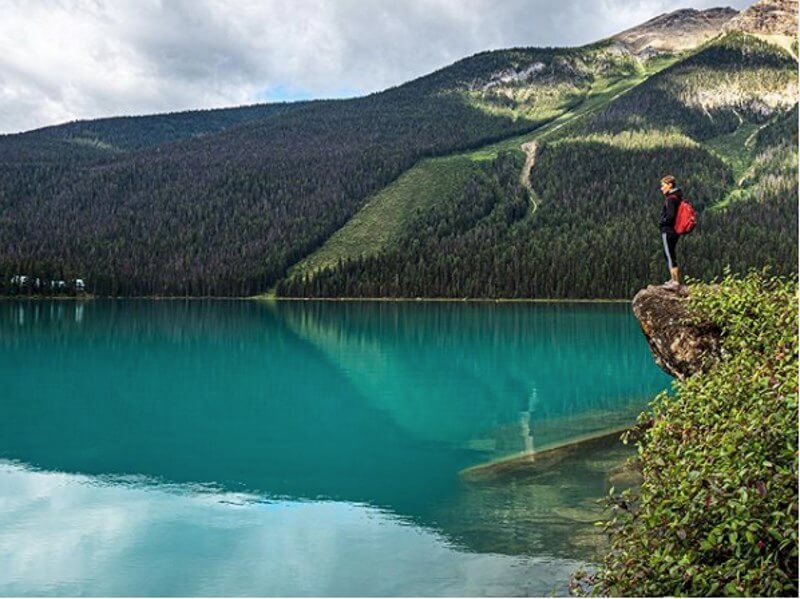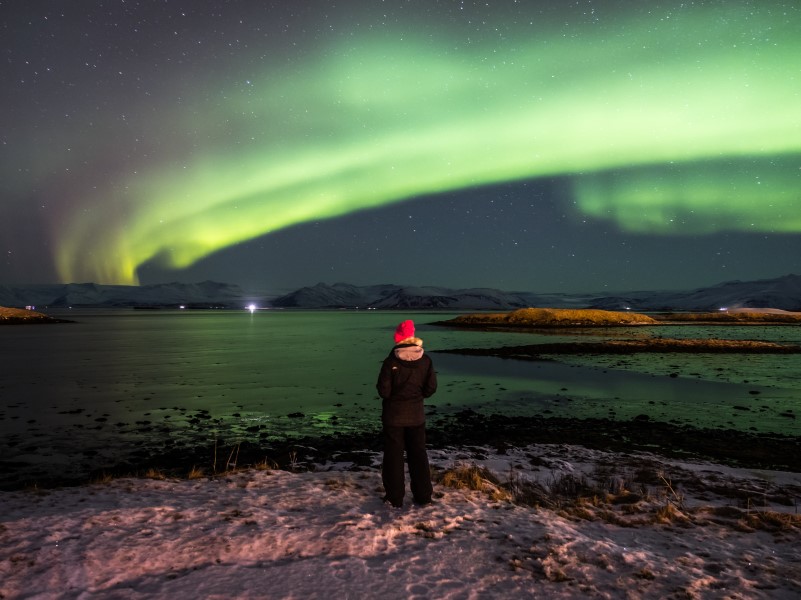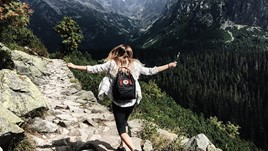
By Veruska Anconitano
Travel Writer12 Aug 2020 - 5 Minute Read
I'm dancing on top of the Kjeragbolten, an iconic boulder overlooking a fjord in Norway. I'm here after 7.5mi (12km) of hiking and 1,870ft (570m) of elevation gain. My legs are tired, and my hands are cold. My husband gets his camera out of his heavy bag and starts taking photos. I watch his professional movements and facial expressions while he decides how and what to shoot.
I look around at the other people who made it to the top, and can’t help but think about the woman we passed who turned back because it was too hard
I want to scream for happiness, and I want to tell the world that I did it. That I was supposed to stay home or lay on the beach for the rest of my life, but I didn't. I pushed myself hard, and I made it.
My cheek is wet with tears. It's joy, it's revenge – it’s overcoming a debilitating illness to arrive at this spot.
I start thinking about the last 10 years or so, to how much my life has changed and the direction it has taken.
I've spent half my life explaining to people that I am not depressed, looking for attention, or faking.
As an adolescent and university student, I suffered from fatigue and blurred vision. As a result, I would miss events, bail on people, and barely had a social life. After a while, people stopped asking if I was depressed, because everybody was sure I was.
It took me years of medical consultations. Years of “there's nothing physically wrong with her,” or “she's an attention-seeker.”
Years of my mum being terrified for me, and my dad being angry with everybody, while I was trying to navigate between my desire to know what was medically wrong and my psychological need to finally be able to prove it was real.
Finally, in 2003, after more than 10 years with no answers, I was finally able to say to people, “I am not depressed. I suffer from a chronic autoimmune neuromuscular disease, called Myasthenia, that causes the skeletal muscles to become weak and the body to experience extreme fatigue.”

The diagnosis was a relief, but it came with a price. (Or, at least, what was supposed to be a price.) "You cannot exercise heavily, and you cannot let yourself get stressed, or overly tired. And if you do, there's a serious risk of complications, such as inability to move or keep your eyes open, and problems swallowing or breathing.”
I started to travel alone at a young age, way before my diagnosis; my parents had always encouraged me, but they'd never been travelers. I’ve always felt the need to discover, to see as many things and places possible, to see how other people live. I honestly don't know where my desire to travel came from. It's always been there, and as soon as I met my future husband, we decided that every penny we made would go towards our trips.
But how could this possibly fit with my condition? My mind was spinning at the mere thought of not being able to travel and discover the world. I was young, and terribly sad.
The first four months after the diagnosis were a nightmare. I was on a strict diet, taking pills, and every single person around me was constantly checking in on me.
Like many would do in my situation, I initially sought out a support group. But while others have found that helpful, in my case, I found more strength in going my own way.
There are many motivational gurus that share quotes such as: “Tell me NOT to do something, and I'll do it twice.” I put that into practice and made it a lifestyle. I decided I was not going to allow Myasthenia to dictate the rhythm of my life.
That happened in February, 2003. That August, after losing about 22lbs (10kg) from the illness in six months, with a bag filled with pills, and every sort of restriction in place (in the range of: do not drive, do not hike, do not party, do not drink, only eat healthy foods, go to sleep early, and so on), I embarked on one of the most epic trips of my life thus far – 20 days in Ireland.
I was seeking the freedom to do what I wanted. I wanted to feel tired – to put my body under stress and see what would happen. I wanted to be scared by the unknown because, let's be honest, this is the beauty of life. I did in my own way, following my body’s needs, and slowly and carefully chose to break some rules.

That's how travel has helped strengthen me. I didn't want to let a disease define my identity and control me and the people close to me. I wanted to prove that a positive attitude can be a pass to a better life. I wanted to see the world and write about it. I wanted to challenge my body by hiking and climbing.
And I did.
Now, I'm standing on top of the Kjeragbolten, surrounded by avid hikers. A couple of Japanese travelers are posing for a selfie.
But my mind is still with the woman I wasn't able to convince to keep going when we were hiking. Can we help someone if that person doesn't want to be helped?
I don't have an answer – I only have my own story. And as far as I'm concerned, it's enough. We have to care for ourselves so we can care for others.
We need to remember that no matter what we have planned for our lives, circumstances can overtake us. We have to choose to be happy every day, in every single thing we do.
And more than likely, that woman was happy to go back, just as I was happy to go ahead.
"Oh, she travels the world to work together with her husband. Her luggage is always open in the living room.” That's how my mother explains what I do for a living to her friends. And she's right.
It hasn't always been like this. But it is now, and I’m determined not to stop anytime soon.
Discover similar stories in
transformation
Travel Writer
Veruska is a travel writer published in various international publications and the co-owner of the award-winning blog TheFoodellers.com.




No Comments